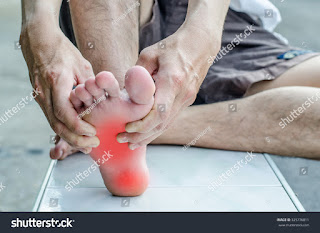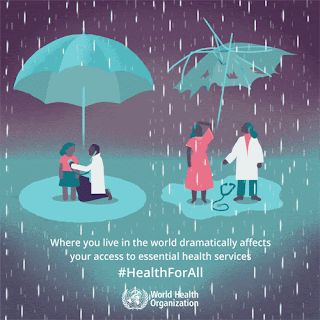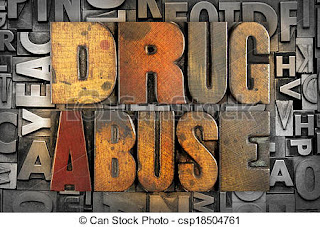Health Hub has moved to www.healthhub.blog
Posts
Impetigo
- Get link
- Other Apps

Written by Timothy Okooboh In my previous post, I explained several skin lesions such as blisters, bullae, crust etc. A sound knowledge of skin lesions is fundamental to understanding various skin infections including impetigo. You can take a few minutes to read my post on skin lesions here→ https://bit.ly/2OXo18Z What is impetigo (also known as School Sores) It is a highly contagious bacteria skin infection that affects the epidermis (the outer layer of the skin). Because it is a skin infection of the epidermis, it is therefore a superficial skin infection. It is mainly characterized by sores, blisters or bullae on the epidermis of the skin, which later release pus that form yellowish or sometimes reddish-brown crusts on the skin. Therefore, in summary, impetigo is an epidermal bacterial blistering skin infection. Risk factors for impetigo Young children especially between the ages of 2 to 6yrs. Impetigo affects adults and older children too but it is more common amon
Skin Health; Understanding Skin Lesions
- Get link
- Other Apps

Written by Timothy Okooboh It was 7.00 Am on Monday morning. Aliyu's mom walked into her five year old son's room to prepare him for school. But to her surprise, she noticed an unusual appearance on his face, around his nose and mouth. Oh my God! What are these? She said. She placed the palm of her hands around his neck to feel his temperature and observed that it was slightly higher than normal. She hurriedly took him to a nearby health centre, panting and beckoned to a nurse to take her to the doctor. Calm down madam said the nurse, what is the matter? It's my son, said the mother, he is not alright. I need to see the doctor immediately. Finally, it got to their turn. After one minute of physical examination, the doctor said, your son has some reddish crusts and blisters around his nose and mouth. This is impetigo. Impeti what? Said Aliyu's mom. Oh don't panic madam. Impetigo is a bacteria skin infection. I will prescribe an antibiotic for Aliyu. He will
HEALTH SUPPLEMENTS; ANY NEED FOR CAUTION?
- Get link
- Other Apps

Written by Timothy Okooboh It is a common practice in most health facilities to ensure almost every patient who walks into the facility leaves with at least one health supplement. For instance, a client who comes just to buy one sachet of paracetamol could end up leaving with a supplement of over two thousand naira. No doubt, health supplements are good for the body. They contain vitamins, minerals, amino acids, fatty acids and some contain herbal extracts such as ginseng. Some of the amino acids and fatty acids contained in health supplements are essential. That is, the body cannot naturally produce them on its own, hence the need for supplements and healthy diets. However, in some facilities, even non health care providers such as sales girls and cashiers recommend supplements to patients. This act reveals that to a large extent there is a general perception among health and non health care providers that supplements are products with very minimal or no side effects, products wi
ARTEMETHER-LUMEFANTRINE; UNDERSTANDING THE CLOCK
- Get link
- Other Apps

Written by Timothy Okooboh The Artemether-lumefantrine clock Recently, there have been widespread reports regarding the ineffectiveness of Artemether-lumefantrine for the treatment of malaria infection. This treatment failure is mostly due to a poor understanding of the correct dosage interval of Artemether-lumefantrine, that is, the various times of the day the drug should be taken during the three day therapy. Below are two common case scenarios of a health care provider and patient interaction that take place in health care facilities across the world especially Sub-Saharan Africa where malaria is most prevalent. Scenario one Health care provider : Good morning madam. This is Artemether-lumefantrine 80/480 mg. It is a medicine that will take care of your malaria infection. Take one tablet when you get home and one tablet 8 hrs later. Then from tomorrow, take one tablet morning and night. Scenario two Health care provider : Go
DIABETIC FOOT CARE
- Get link
- Other Apps

Written by Timothy Okooboh Diabetes mellitus is one of the leading causes of non-traumatic lower extremity amputation (LEA) worldwide. Prevalence rates of diabetic foot lesions vary from 0.9 - 8.3 % in Nigeria. Diabetes is a disease in which blood glucose levels are elevated either as a result of insulin deficiency or impaired sensitivity of insulin receptors. Insulin is the hormone that promotes the absorption of glucose into the liver, fat and skeletal mucles. Therefore, problems with insulin secretion or impaired response to insulin production will lead to the build up of glucose in the blood, known as hyperglycemia. Complications due to diabetes can be classified into two groups: macrovascular and microvascular complications. Macrovascular complications due to diabetes include coronary artery disease, peripheral arterial disease and stroke. Microvascular complications due to diabetes include diabetic neuropathy, diabetic retinopathy and diabetic nephropathy. Peripheral
PATIENTS AND THERAPEUTIC DRUG MONITORING
- Get link
- Other Apps

Written by Timothy Okooboh There are drugs that should not be prescribed without regularly monitoring the patient or drug concentration in the plasma or serum. In this era of pharmaceutical care, these are medications a pharmacist should dispense after ensuring that the patient is under regular monitoring at the health facility the drug was prescribed. Some drugs have narrow therapeutic index, meaning that small differences in dosage or blood concentration may lead to treatment failure or adverse drug reactions. Some drugs without a narrow therapeutic index are even potentially toxic hence, patients on these drugs need to be monitored through out therapy. Some patients may already have liver or kidney problems before starting a medication. These patients belong to a high risk group and need to be monitored while on some medications because most drugs are metabolized and cleared by the liver or kidneys and for patients who already have problems with these organs, drug to
Sexual Health; Overcoming Erectile Dysfunction
- Get link
- Other Apps

Written by Timothy Okooboh (PharmD) Erectile dysfunction (ED) commonly known as impotence, is a sexual disorder experienced by men in which a man has difficulty achieving penile erection sufficient enough to enjoy sexual intercourse. The man could be unable to achieve erection, unable to achieve hard enough erection or he could be unable to sustain the erection long enough to enjoy sexual intercourse with his partner. Erectile dysfunction can affect men of all ages. Getting older doesn't cause ED, it only increases the chances of developing ED. 50 percent of men between the ages of 40 and 70 have ED. 7 in 10 men aged 70 and and above have ED. Erectile dysfunction can be very embarrassing for a man to even discuss with friends or even a medical personnel. It can adversely affect marriages and other sexual relationships as it could lead to infidelity, divorce, low self esteem and depression. Hence it is worth learning about in order to know how to reduce the risks of dev
World Health Day; Understanding Universal Health Coverage.
- Get link
- Other Apps

Written by Timothy Okooboh (PharmD) World Health Day #HealthForAll "Health is a human right. No one should get sick and die just because they are poor or because they cannot access the health services they need." Dr. Tedros Adhanom Ghebreyesus WHO Director General. The focus of this year's World Health Day is Universal health coverage through the # HealthForAll campaign. Universal Health Coverage means that all people and every community receive the health services that they need without suffering financial hardship. "Universal" means "for all", without discrimination, leaving no one behind. #HealthForAll is a campaign to promote Universal Health Coverage by year 2030. In simple terms, Universal Health Coverage means: - People should not go hungry just because they pay for
An Overview of Drug Abuse
- Get link
- Other Apps

Written by Blessing Ogbomo (PharmD) " Every form of addiction is bad, no matter whether the narcotic be alcohol or morphine or idealism " Carl Jung. Drug abuse clinically known as substance use disorder, is the indiscriminate use of any chemical substance including cigarettes, inhalants, alcohol and others. -At least 15.3 million persons have drug use disorders. -The harmful use of alcohol results in 3.3 million deaths each year. -On average every person in the world aged 15 years or older drinks 6.2 litres of pure alcohol per year. -It is estimated that 255 million people used illicit drugs such as cannabis, amphetamines, opioids and cocaine, in 2015 which translates into an annual prevalence of illicit drug use of 5.3 percent. Reference from : World drug report, 2017. (www.who.int/substance_abuse/facts/en/). "Addiction isn't about substance - you aren't addicted to the substance, you are addicted to the alteration of mood th